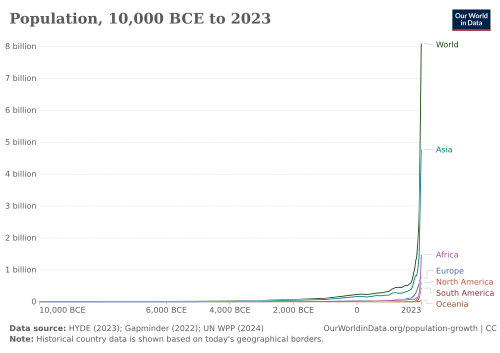Quote:
Originally Posted by aerohead

Your argument about 'heat', rather than 'cold' cannot be supported though.
Heat's a killer. Directly, and indirectly.
And without 'technology', the natural carrying capacity of the planet is estimated at only about 100,000,000 souls.
|
- I have some evidence, such as the fact that human numbers were miniscule at the peak of this current ice age, and rapidly increased as things thawed.
- We have a biological mechanism to deal with excessive heat through perspiration and evaporation. We do not have a biological mechanism to contend long-term with insufficient heat, and much energy is wasted during brief periods of hypothermia. It's a tough thing to be a hairless ape in an ice age.
- Expending energy for warmth demands more calories, and obtaining more calories demands a plan to have those calories when they are most scarce; during winter weather.
- Hypothermia has and still does kill more people every year than hyperthermia.
- The bulk of the human population exists closer to the equator than the poles, suggesting a preference to warmer climates.
- Finally, the fact that humanity originated from Africa suggests our species is better suited to those environments.
The consilience of these facts strongly supports my hypothesis that humanity is biologically adapted to warmer climates compared to colder ones.
As you point out, it's technology that allows humanity to exist in all climates and have prolific numbers.
20,000 years ago during this glacial maximum, there might have been 1 million living humans


"Current era: About 10% of the land area is covered by glaciers, ice caps, and ice sheets (National Snow and Ice Data Center, 2017).
Last Ice Age (20,000-10,000 years ago): Approximately 30% of the land on Earth was covered by glaciers (WorldAtlas, 2018).
During the most active period of the last ice age (around 20,000 years ago): Around 50% of the land on Earth was covered by glaciers (Tamara Pico’s study, 2023).
Historically: Permanent ice has only existed on Earth for about 20% of the planet’s history, during periods of icehouse climate (Earth Science Stack Exchange, 2023)."